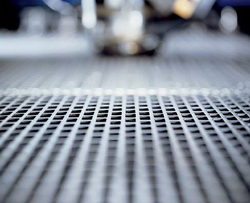Introduction to Metal Fabrication Techniques
Metal fabrication is a very time consuming but rewarding job. It takes skill and patience as well as blue printing and measuring for the job at hand to turn a chunk of metal into something functional. There are several techniques to which metal can be fabricated and divided into several parts.

- Forging: is a technique for making parts for car engines by using plastic deformation of the work piece by utilising compressive forces to make pistons, crankshafts and camshafts, gears, etc.
- Extrusion: Extrusion billets are forced through one or more dies using compressive force.
- Drawing: is a method of forming sheet metal into items such as cups and plates. It can also be used for light weight utensils.
- Spinning: is a technique used when a large square or rectangle shaped chunk of metal is put on a lathe and spun cut until it takes its axial symmetrical shape.
- Bending: is a technique used for making flanges, seams and curls by means of applying force through a hydraulic or a pneumatic machine.
Metal Fabrication Techniques
Metal fabrication is an industrial term that utilises the use of machines and other equipment by the use of shaping, cutting and assembling raw material components. Most metal fabrication shops are mostly employed by contractors and typical projects include loose parts, structural framing, heavy equipment and hand railings for stairs.
The typical raw materials used for metal fabrication are plate material, expanded and formed metal, square stock, tube stock and welding wire. The method of shearing is mainly used for cutting plate material, whereas the use of specialty cutting saws is used for the cutting of other types of metals. Another powerful tool used for cutting metal is the band saw they allow for a perfectly straight cut metal, it can also be used for cutting wood and other softer materials.
Moulding is another metal fabrication technique which refers to changing the raw material to give it a new shape. There are different metal fabrication methods for this and each use different heat temperatures to remove the material and for this process a cutting tool is used.
So What is Metal Fabrication?
Metal fabrication is the process of transforming raw metal stocks and forming them into the desired product. This includes a wide range of processes which include metal cutting, welding, bending, stamping, shearing, sawing and drilling just to name a few. Structural fabrication is mainly used in the construction field for buildings and bridges. Skilled welders are regulated by their institute where they received their training, and have to re certify every couple of years.
The skills and practices in this field include the use of cutting torches and abrasive grinding wheels because they are easy to transport. Other methods used for larger metal fabrication techniques include the use of plasma cutters and water jet beds that can produce impressive results with greater tolerances. Computer numerical controlled machines (CNC) and computer numerical controlled machines may also be used.
Metal fabrication has been a method used for centuries and is being made easier for the contractor to use, whether it is being used in field using smaller hand held tools or the larger in shop stationary machines.
Back to Top- Home
- Architectural Metal Fabrication
- Custom Metal Fabrication
- Guide to Metal Fabrication
- Metal Fabrication and Welding
- Metal Fabrication Companies
- Metal Fabrication Company
- Metal Fabrication Contractors
- Metal Fabrication Course
- Metal Fabrication Courses
- Metal Fabrication Equipment
- Metal Fabrication FAQs
- Metal Fabrication Industry
- Metal Fabrication Jobs
- Metal Fabrication Machinery
- Metal Fabrication Machines
- Metal Fabrication Manufacturing
- Metal Fabrication Products
- Metal Fabrication Projects
- Metal Fabrication Schools
- Metal Fabrication Services
- Metal Fabrication Supplies
- Metal Fabrication Techniques
- Metal Fabrication Tools
- Metal Fabrication UK
- Metal Fabrication Welding
- Metal Fabrication Work
- Precision Metal Fabrication
- Precision Sheet Metal Fabrication
- Sheet Metal Fabrication
- Sheet Metal Fabrication Jobs
- Sheet Metal Fabrication Machinery
- Sheet Metal Fabrication Machines
- Sheet Metal Fabrication Tools
- Sheet Metal Fabrication UK
- Steel Metal Fabrication
- Used Metal Fabrication Machinery
- Welding and Metal Fabrication
- Welding Metal Fabrication
